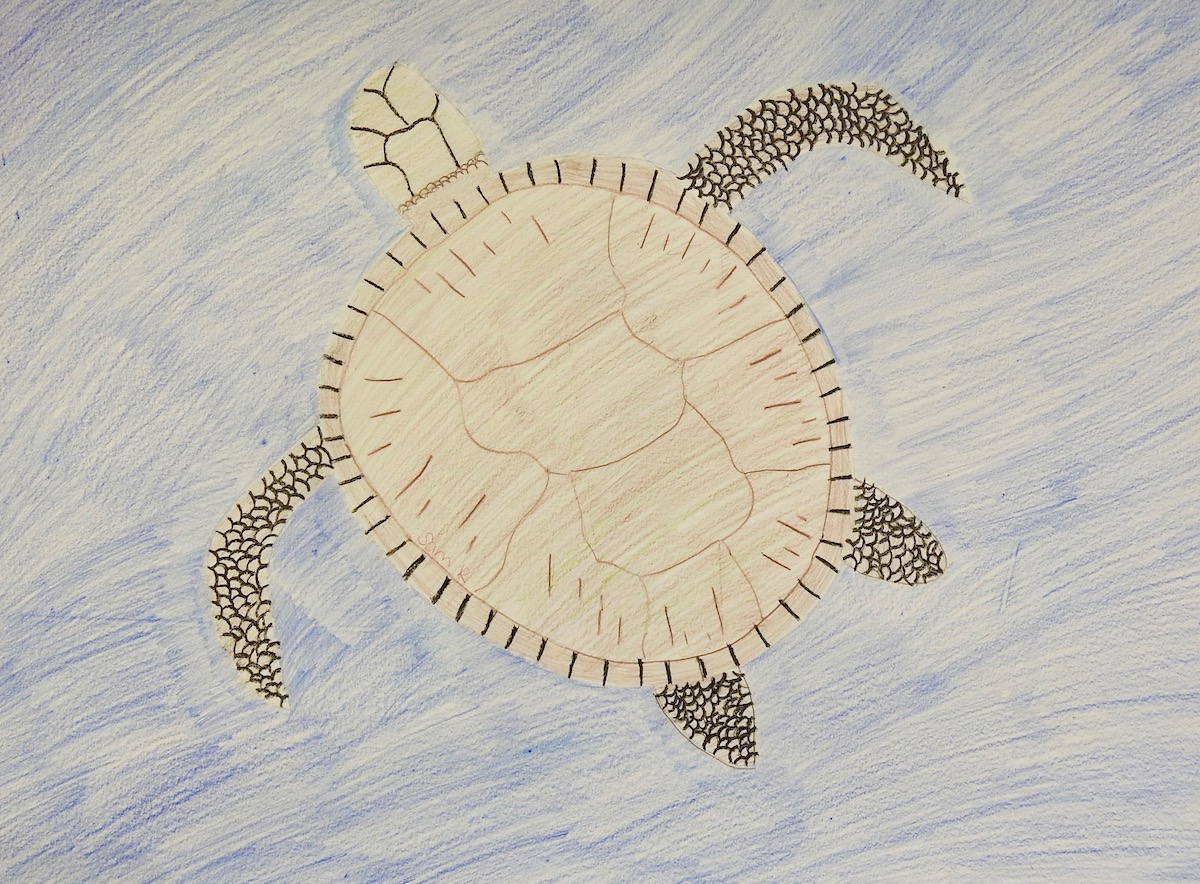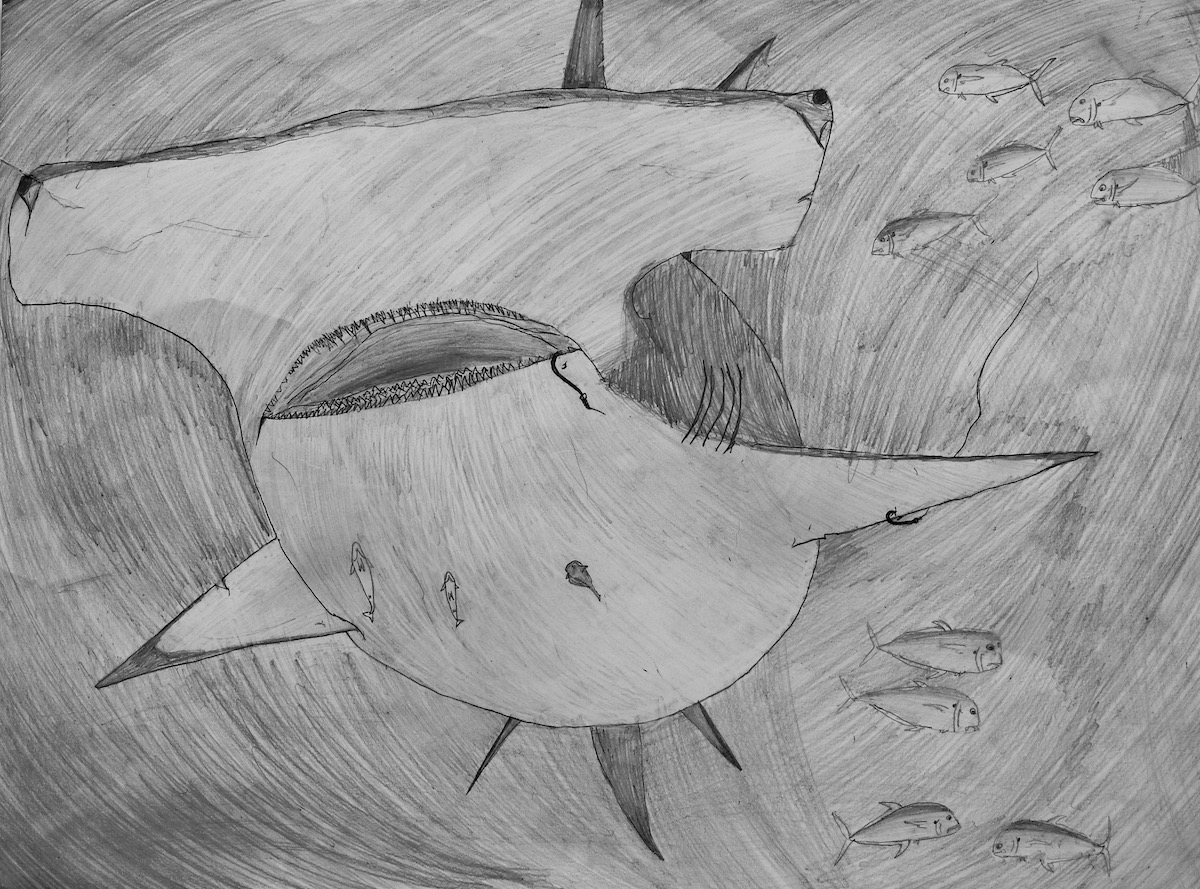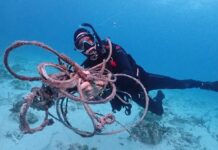In 2018, award-winning Florida photographer Michael Patrick O’Neill visited Marathon Middle High School. While meeting with the students, he used awe-insipiring photographs to tell stories about the ocean and conservation.
“It was visual story telling,” said MMHS’ Kathy Lancaster. “We, the students and I, spent some time talking and thinking about his presentation and decided to do something similar.”
Lancaster and MMHS art teacher Dabney Abbott worked with two sets of students — high school artists and middle school writers — on the innovative project. The younger students were tasked with writing a narrative to accompany the artwork.
“It was very successful and generated a lot of unique ideas, things they were passionate about. Plus, the kids did the research behind the issues to depict it verbally and through the artwork,” Abbott said.
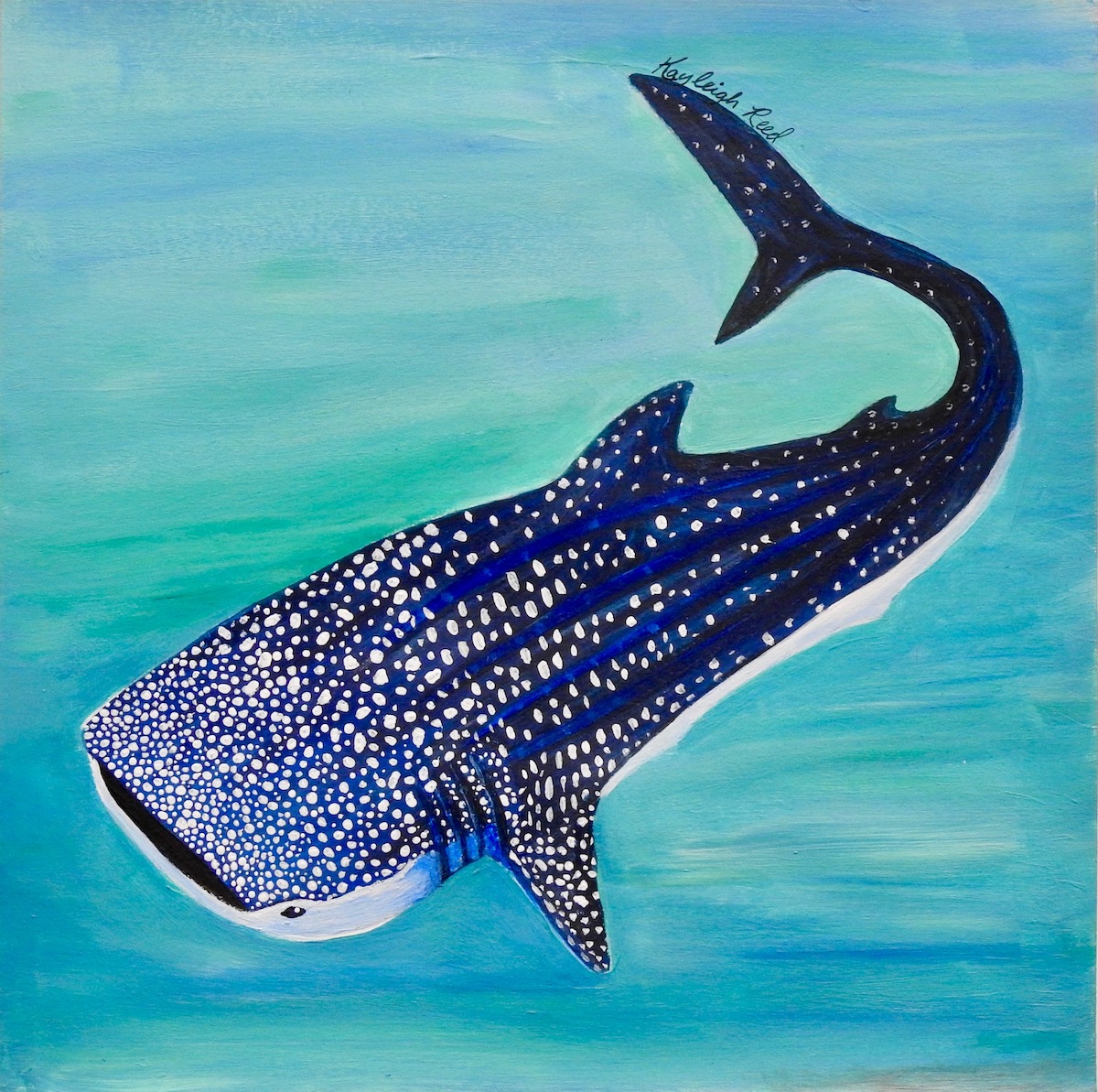
Whale Shark
Artist: Kayleigh Reed
Author: Ella Dunn
Whale sharks are the gentle giants of the oceans. They can live up to 100 years and reach up to 41,000 pounds. Whale sharks are an endangered species and rough estimates put their numbers at only 7,000 left. Though it seems differently, whale sharks have no natural predators. Except humans. Whale sharks fall victim mainly to finning, the deadly act of removing fins for human appetite and leaving the remains to suffer and die. To help, support conservation groups protecting whale sharks.
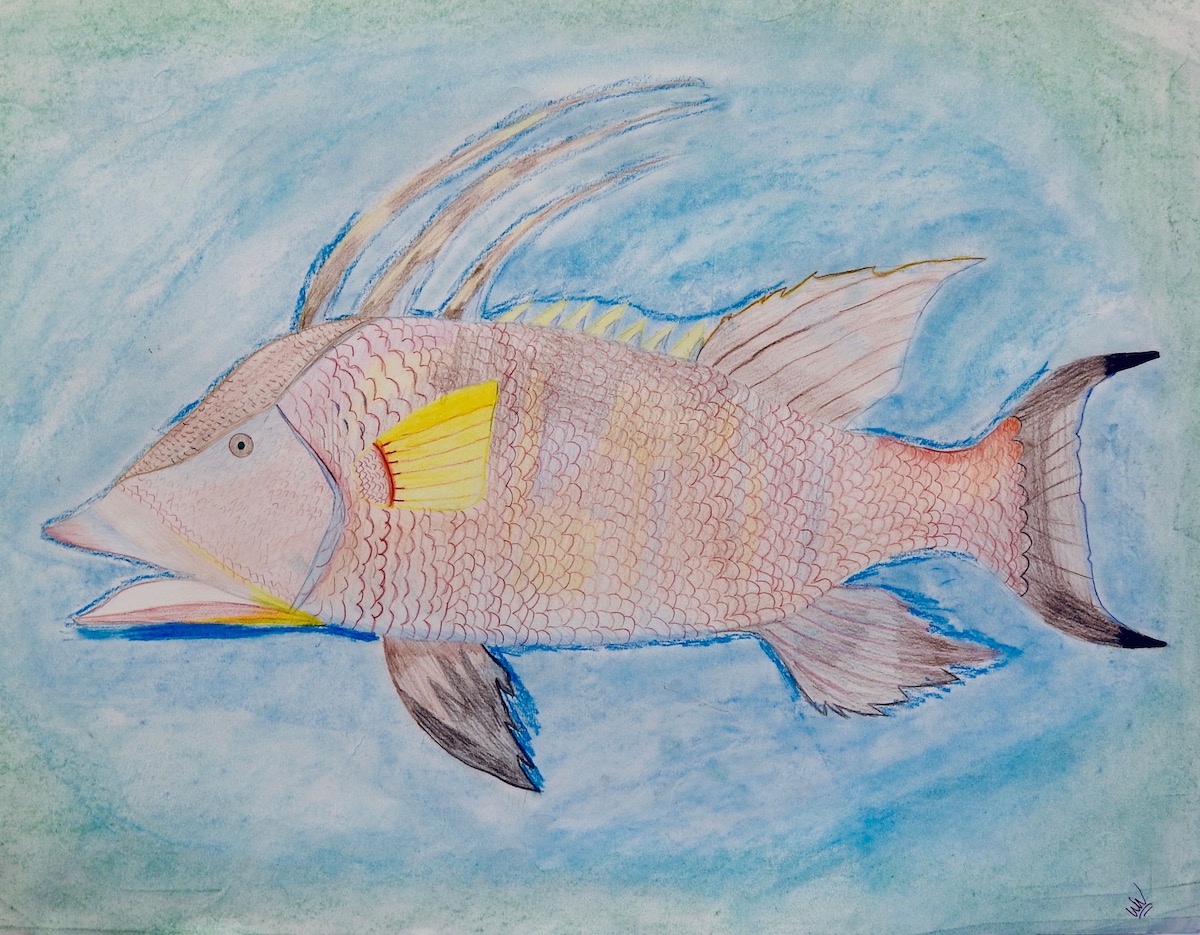
Hogfish
Artist: Willie Wilson III
Author: Rylee Seligson
People often think that hogfish belong to the snapper family, but there is an important distinction for fisherman. We need to obey the rules and regulations to maintain the interplay of the species. The hogfish is a species of wrasse, many of which are bright colored. Their population is greatly decreasing. But we still have time to help the species. It’s simple! All we have to do is obey the fishing regulations. It’s within our generation’s power to help.
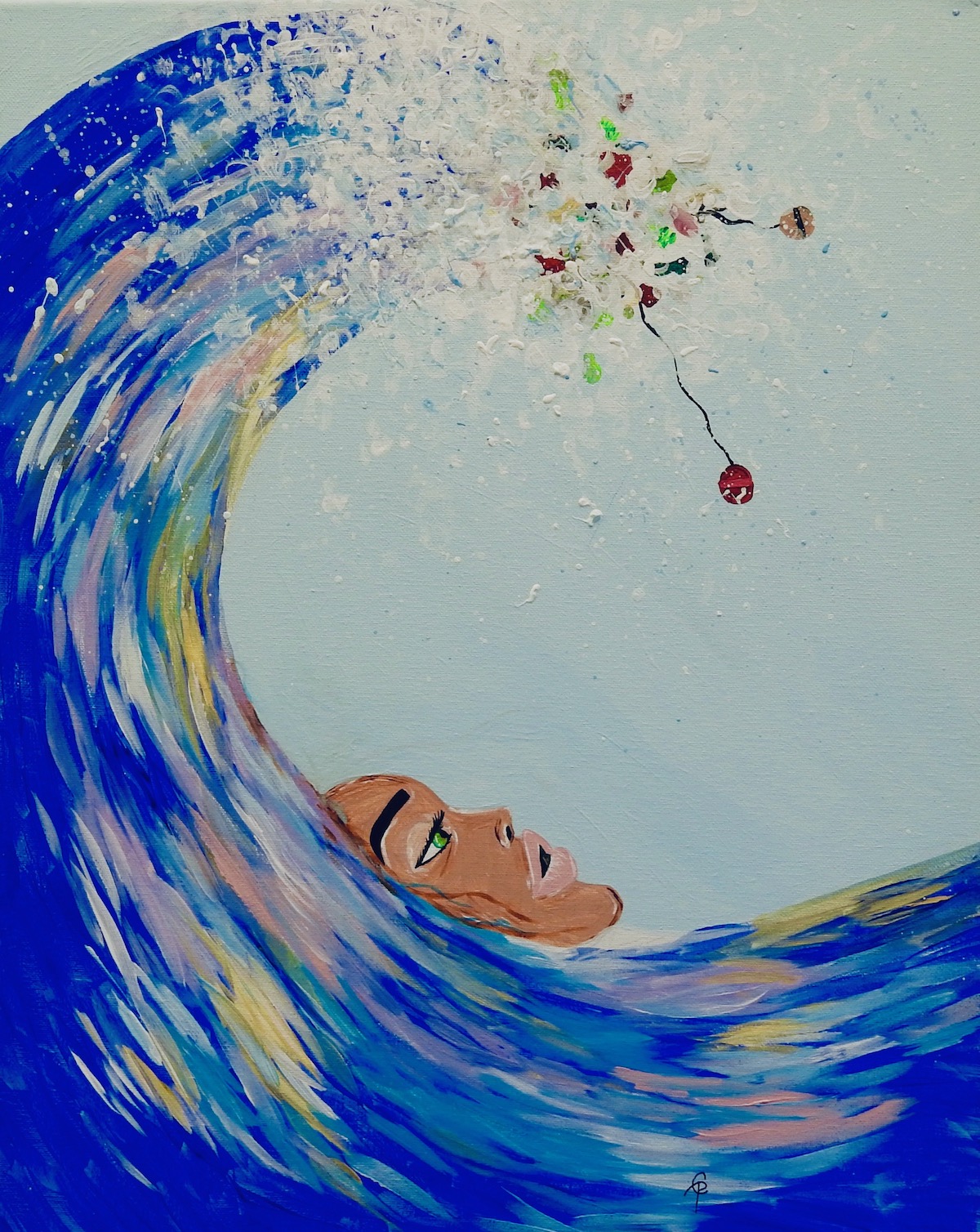
Drowning
Artist: Celine Ponzoa
Author: Chloe Migut
The ocean is overflowing with plastic. There are approximately 5.25 trillion pieces of trash in the ocean. Currently of that mass, 269,000 tons float on the surface while some four billion plastic microfibers per square kilometer litter the deep sea. It is estimated that more than 1.5 million pounds enter the ocean every hour. If our oceans deteriorate any more, we will, too.
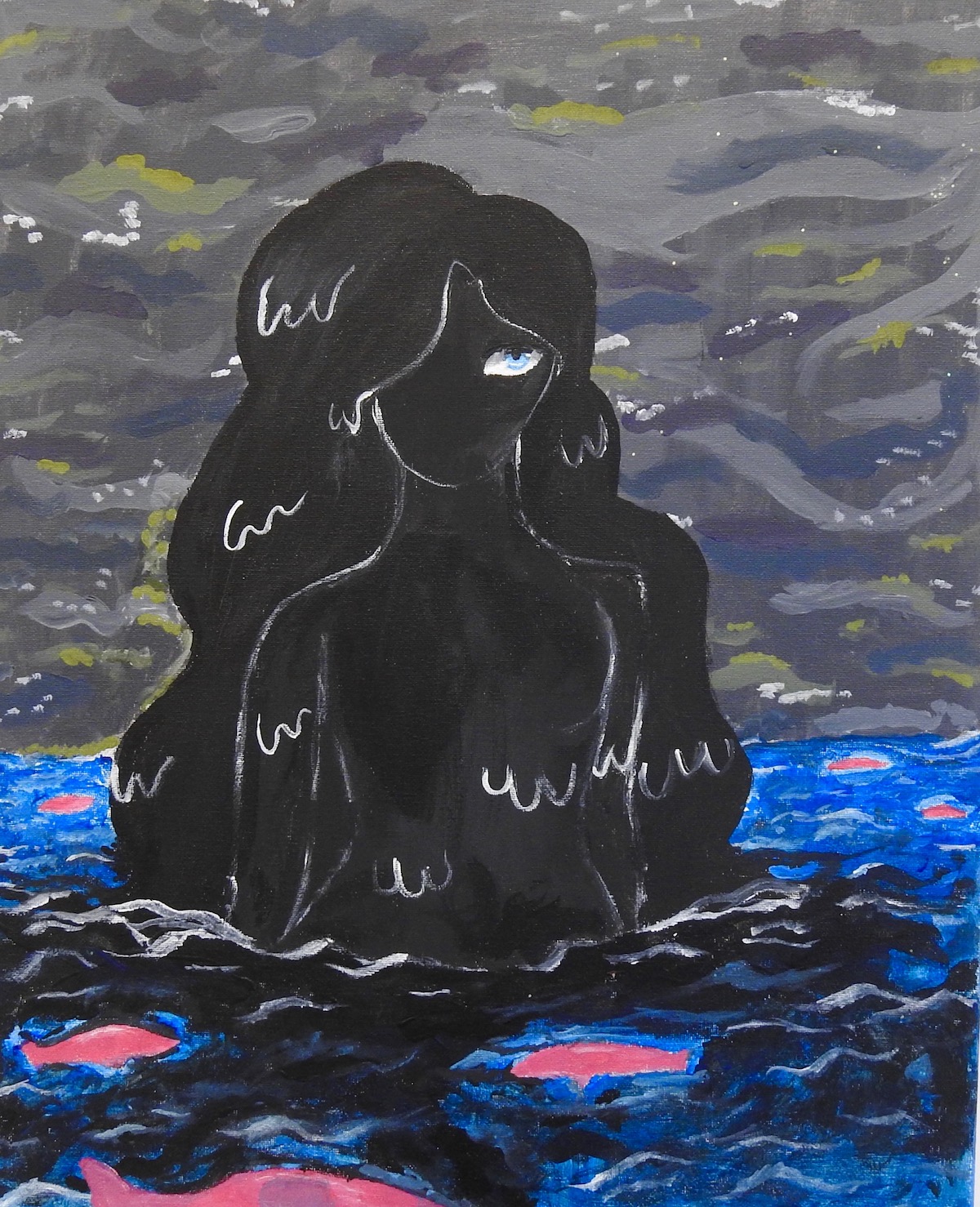
Oil Spill
Artist: Sarah Kratzert
Author: Chloe Migut
Oil spills wreak havoc on any ecosystem and organism they reach. An oil spill is the release of a liquid petroleum hydrocarbon into the environment, especially the marine ecosystem, due to human activity and is a form of pollution. The 2010 Deep Water Horizon Oil Spill in the Gulf of Mexico was one of the most memorable. These detrimental spills take lots of money and time to clean up. Who knows what kind of long-term damage these spills cost us.

Tiger Trash Can
Artist: Erick Clark
Author: Yasiel Rodriguez
Toxins in plastic weaken and harm any fish or mammal that consumes them. Consumed plastic won’t deteriorate over time so when the next fish or bird in the food chain feeds, the plastic will transfer to its stomach. This process continues until all animals in the food chain have these plastic pieces as well. There are many ways we can assist marine life by taking a few precautionary steps such as cleaning up and refraining from throwing trash inside or near the ocean in the first place!
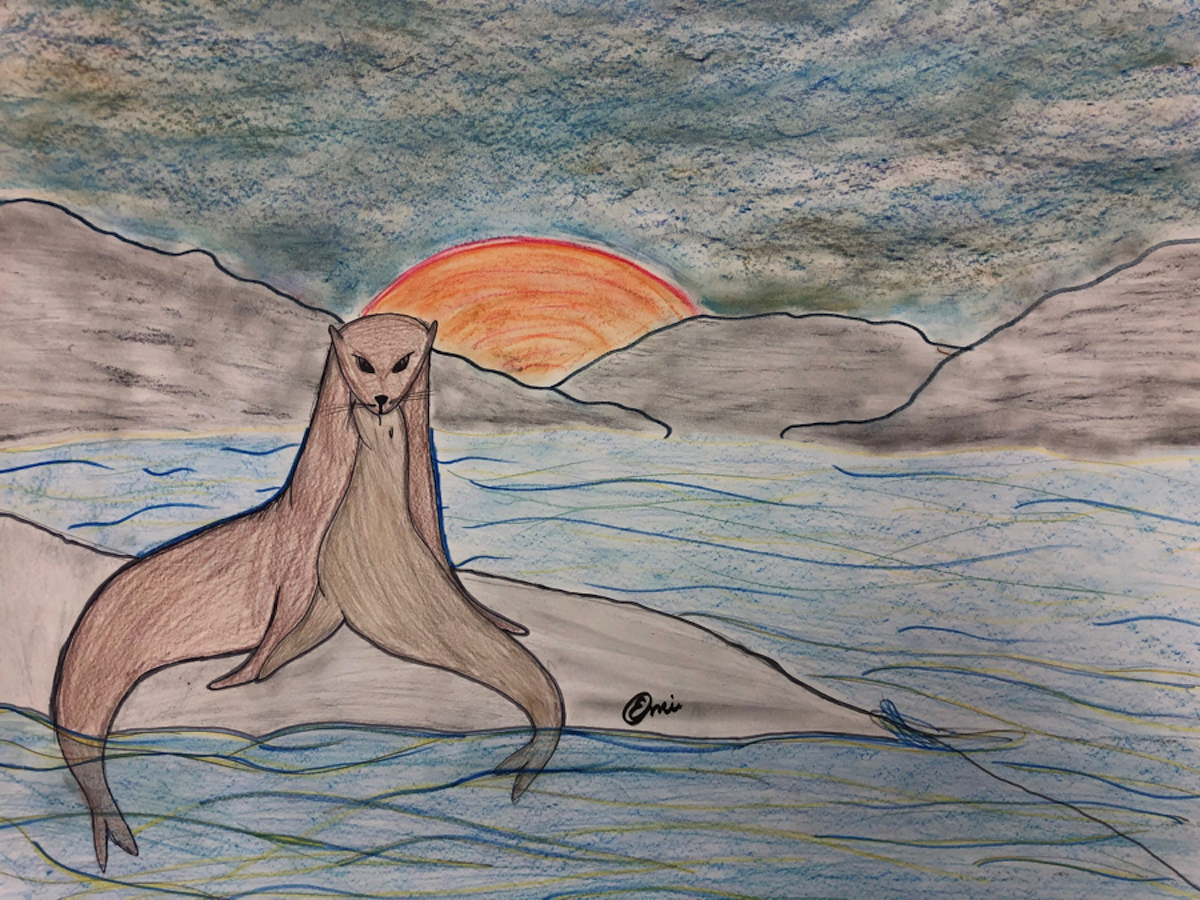
Sea Lions
Artist: Esmeralda Prieto
Author: Ella Dunn
Sea lions live throughout the world and have a number of natural predators including killer whales, sharks, and humans. However, that isn’t the only reason some sea lions are facing declining populations. Parts of the Arctic, for example, have faced massive loss of ice, which is an important part of their habitat. Since the 1980s, the world population of stellar sea lions has decreased from 300,000 to less than 100,000. To benefit, use less materials that cause pollution.
Turtle
Artist: Sam Roiz
Author: Chloe Migut
Sea turtles reside in every ocean. They range anywhere from 90 to 2,000 pounds. Sea turtles have a special talent to swim back to the exact beach they were born to lay their eggs using an internal GPS based on Earth’s magnetic field, sometimes called “magnetic highways.” Nearly all species of sea turtles are critically endangered, especially Olive Kemps Ridley, for many reasons, including pollution. We could resolve this problem by reducing our trash production and flow into ecosystems.
Hooked
Artist: Thomas Eubanks
Author: Mason Buxton
Overtime, the overfishing of sharks has substantially increased. Once the death rate due to overfishing was at sixty three million per year, the rate has now risen to over a hundred million killed per year. Sharks lay only five to six eggs at a time, unlike most fish which lay thousands at a time. This makes them much more vulnerable than most sea creatures. We could solve this by attempting to add a worldwide regulation on shark fishing.
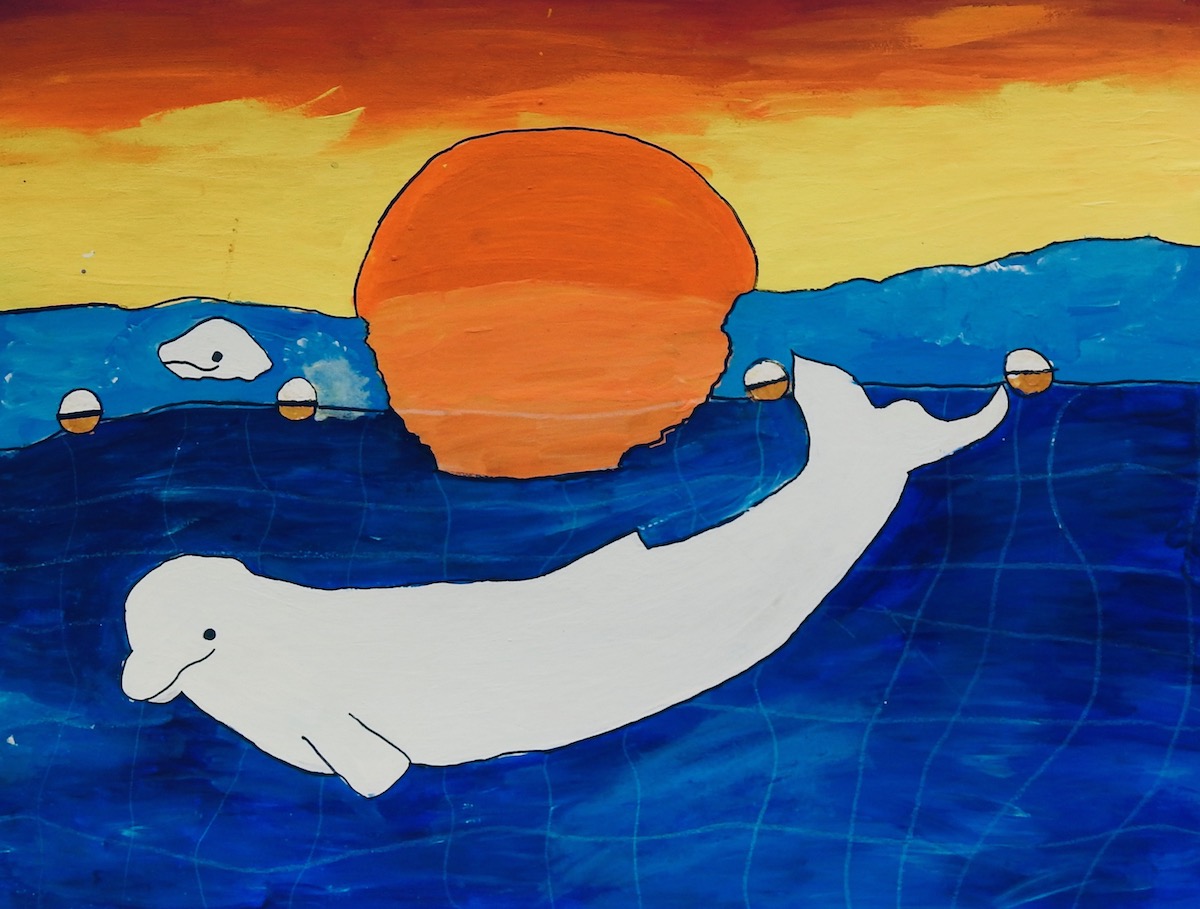
Caught
Artist: Samantha Schofield
Author: Ella Dunn
Beluga whales are often called the marshmallows of the sea. Living in the Arctic, belugas can reach up to 3,000 lbs. They mainly eat flounder, cod, and herring. These species are commercially fished. That is the act of collecting large amounts of seafood for commercial purposes. When nets are dropped to retrieve the catch, fish aren’t the only ones coming back up. Fishermen can easily throw the suffering belugas back that may be caught in the nets, either knowingly or unaware of the consequences. As beluga populations decrease, they’re becoming endangered. Ways to benefit include choosing eco-friendly seafood options.
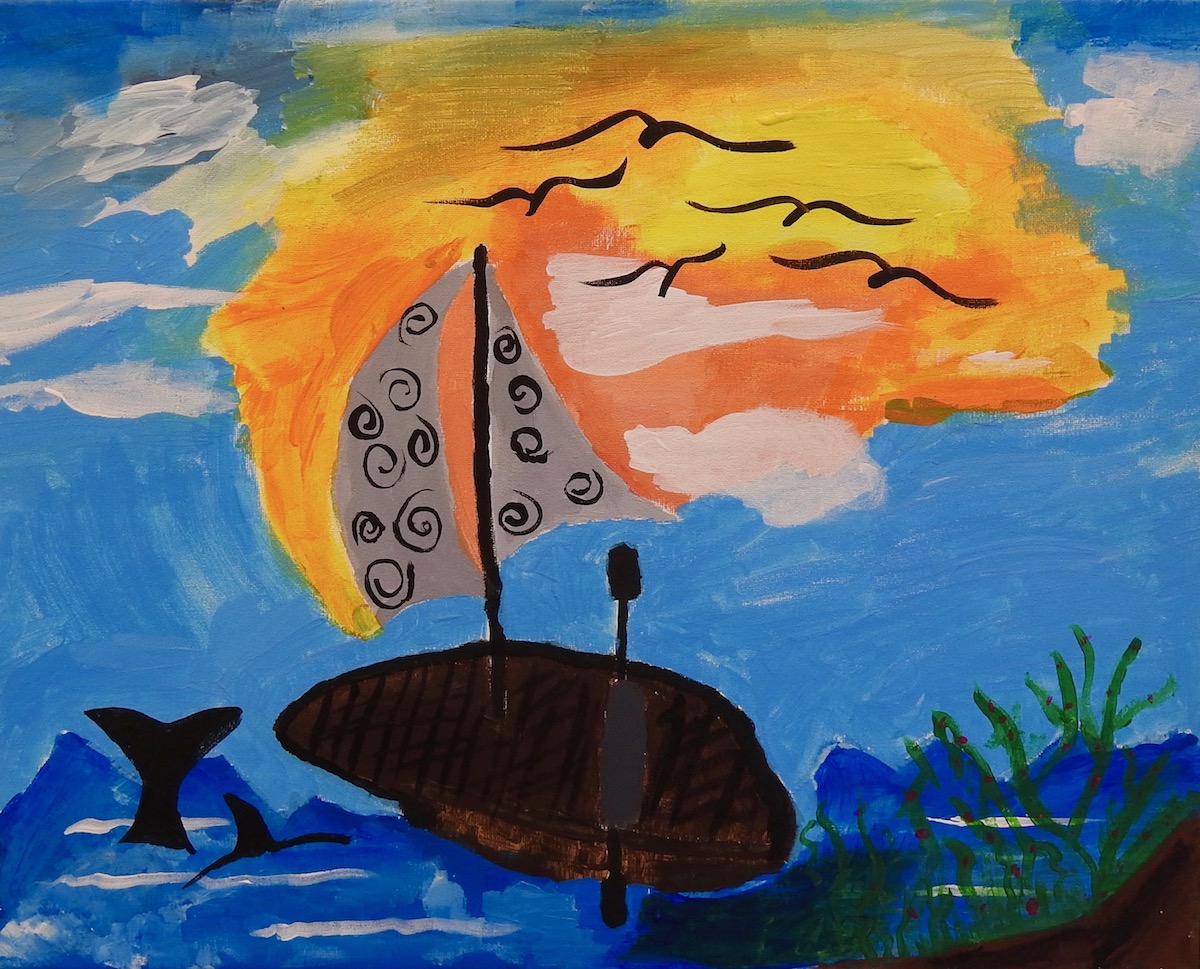
Sail Away
Artist: Ami Garcia
Author: Yasiel Rodriguez
Overfishing has drastic negative effects on ocean marine life. Although many fish are able to reproduce rather quickly, the growing population of humans means that more food is required. And, because of this, more fish are caught daily, thereby reducing the overall numbers. Bycatching, the unintentional capture of another species, is another problem we have. This event happens rather frequently due to netting procedures that entangle the unintended species. Those species often go unused and are harmed or perish from out-of-water exposure.
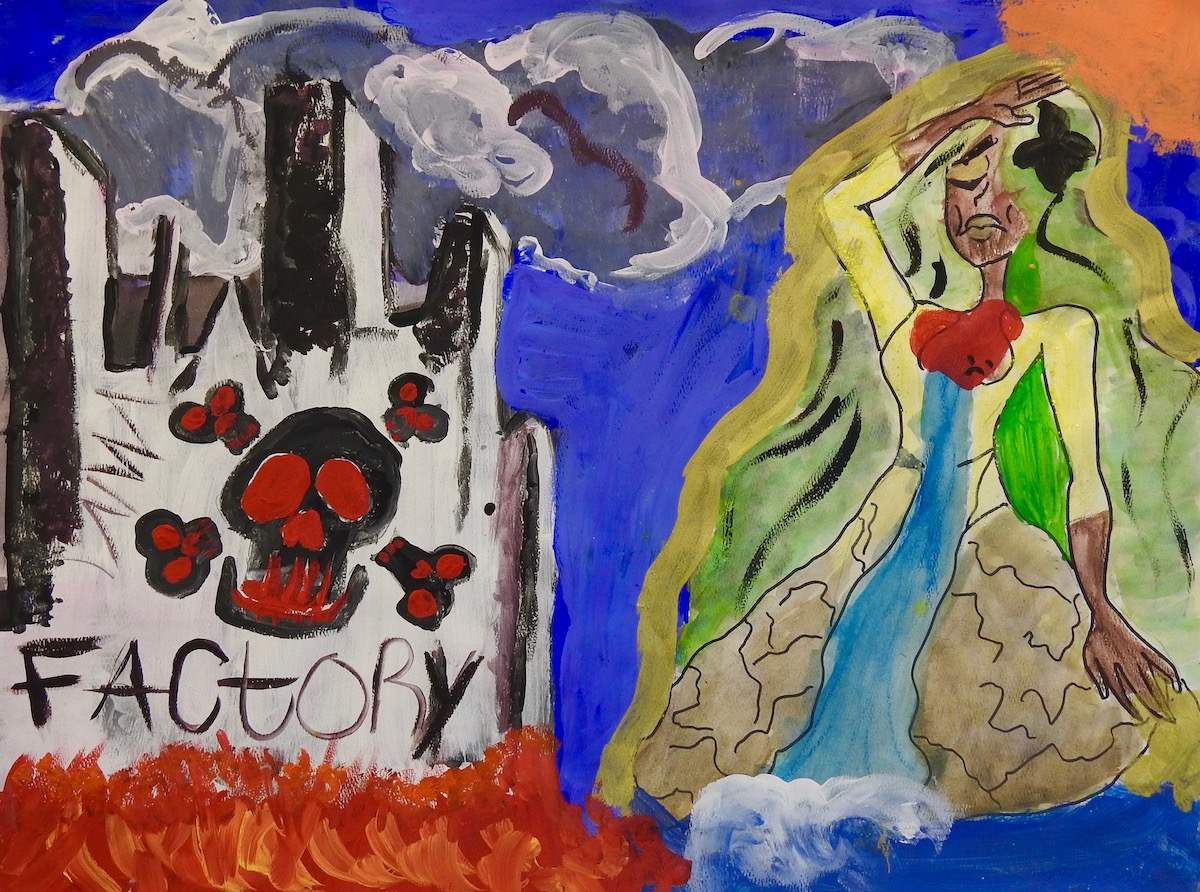
Humanity vs. Mother Nature
Artist: Zyan Wiggins
Author: Rylee Seligson
In the Industrial Age, we never thought about polluting our air and oceans. Now our generation is realizing that we have done a great deal of damage. We are now stuck to fix all of it. By making sure that we use recyclable and easy to dispose of materials we can save our earth one step at a time. Otherwise, it could be too late.
















